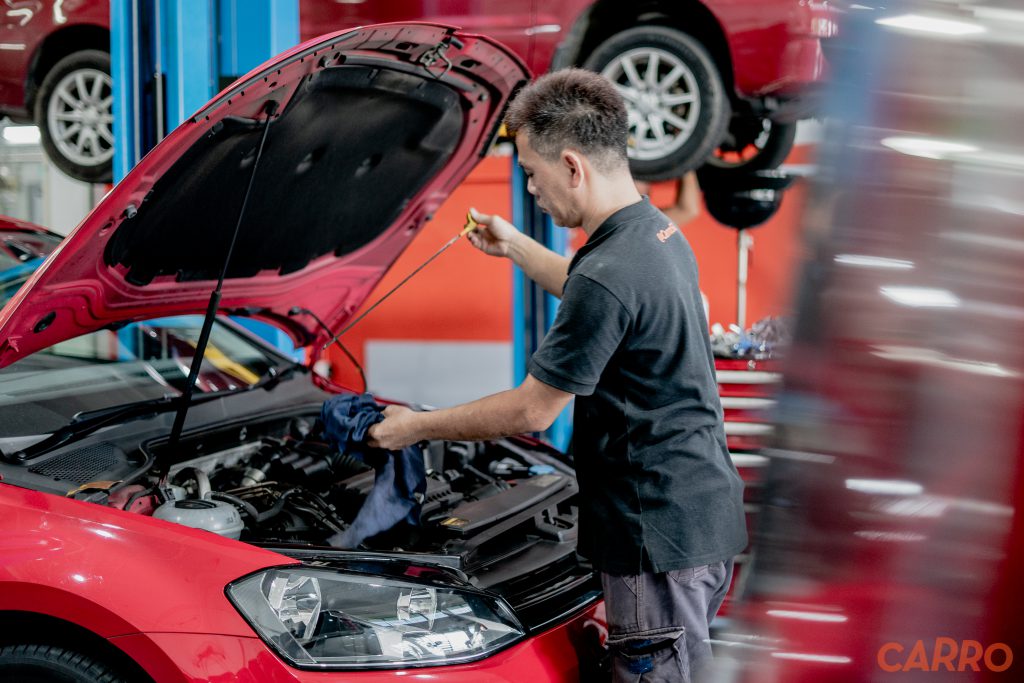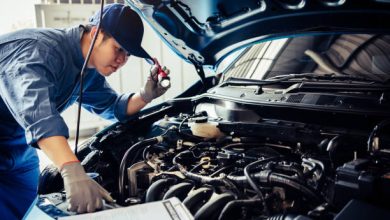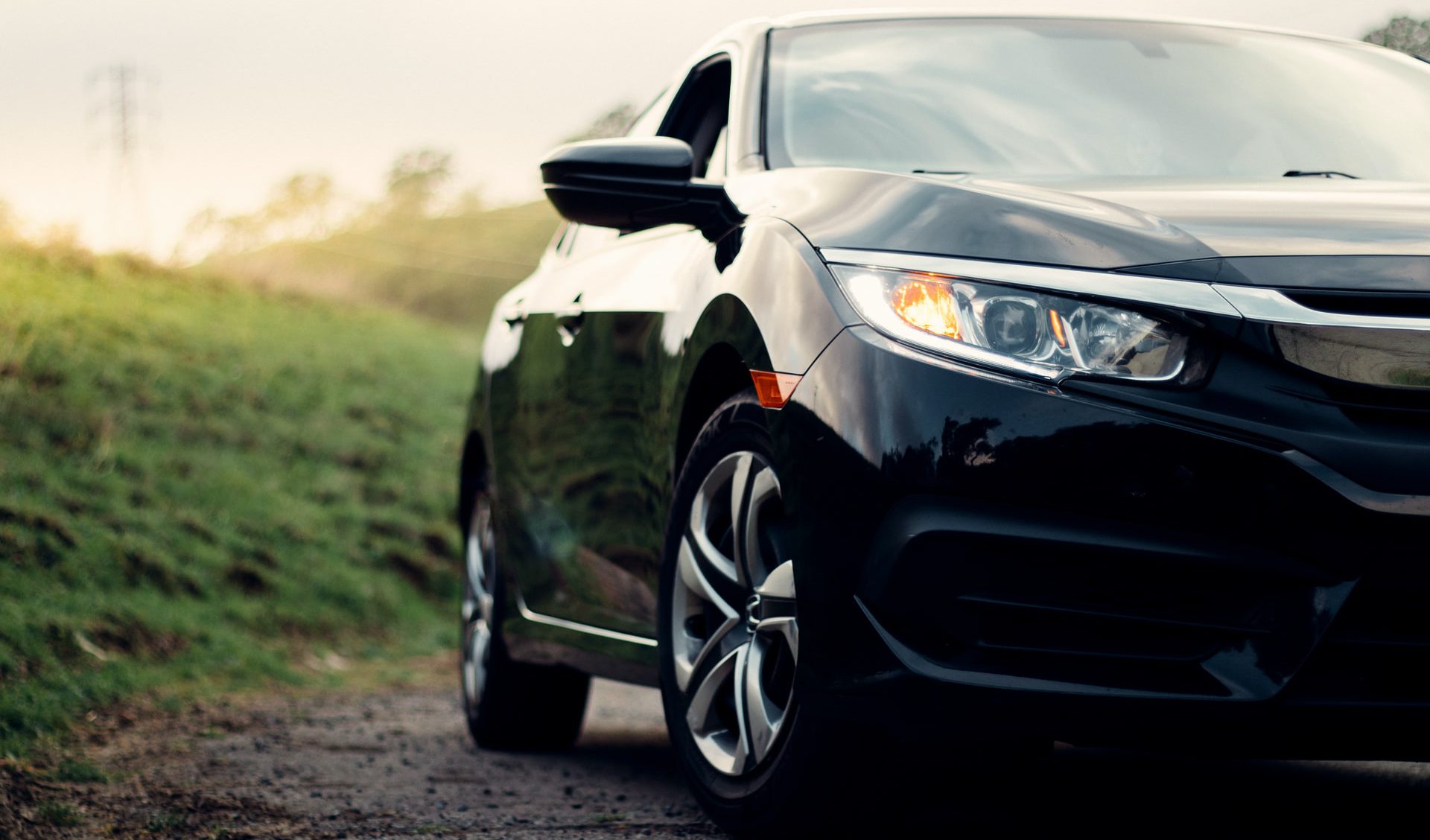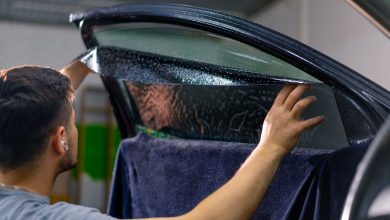Car on Fire? Here’s What You Should Do!
In recent weeks, there have been two high-profile cases of car fires and these incidents have prompted a few key questions — why do car fires happen, is it a common incident, and what to do if your car is on fire?
While rare, these incidents still do happen. In fact, in 2020 there were 153 vehicle fires alone. While this number is decreasing year-on-year, it’s still a significant number of car fires that happen every year and a situation you should know how to navigate. And in this article, we’ll be taking you through the whys, the hows, and everything in between!
Why Do Cars Catch Fire?
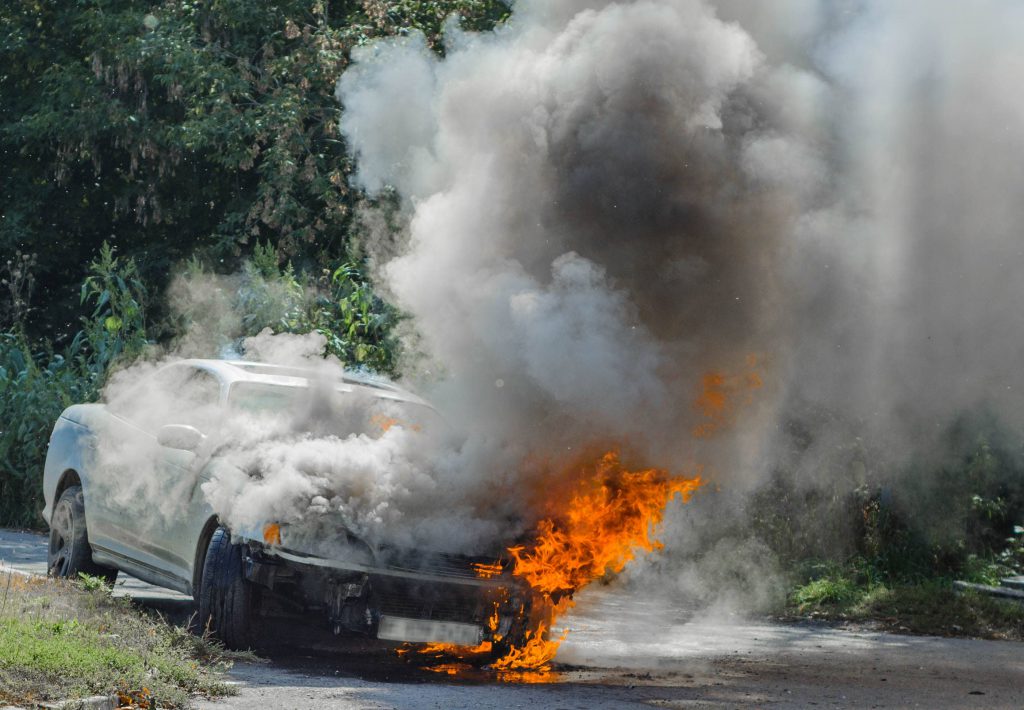
There are a number of reasons why a car would catch fire. In most cases, these fires start small but can snowball really quickly due to the presence of flammables like petrol, diesel, and other lubricants like engine oil, transmission fluid, and brake fluid. These liquids can combust quickly due to the electrical and heating components found in cars.
Some of the c0mmon reasons why cars catch fire are:
- Overheating
- Fuel Leaks
- Short Circuits or Faults in Car’s Electrical Wiring
- Ruptured Battery
- Damage Due to Accidents
However, the main cause of vehicle fires as reported by SCDF is related to engine heating, electrical faults in the engine compartment, or fuel system leak due to faults in fuel line connectors, carburettors, or fuel injection systems. In many cases, these fires are a combination of a number of reasons — from human errors to mechanical faults and even chemical issues.
What Are the Signs?
Identifying the warning signs that your car is on the verge of catching fire could mean life or death. It also gives you a chance at preventing this scenario from happening, which will inadvertently save you thousands of dollars.
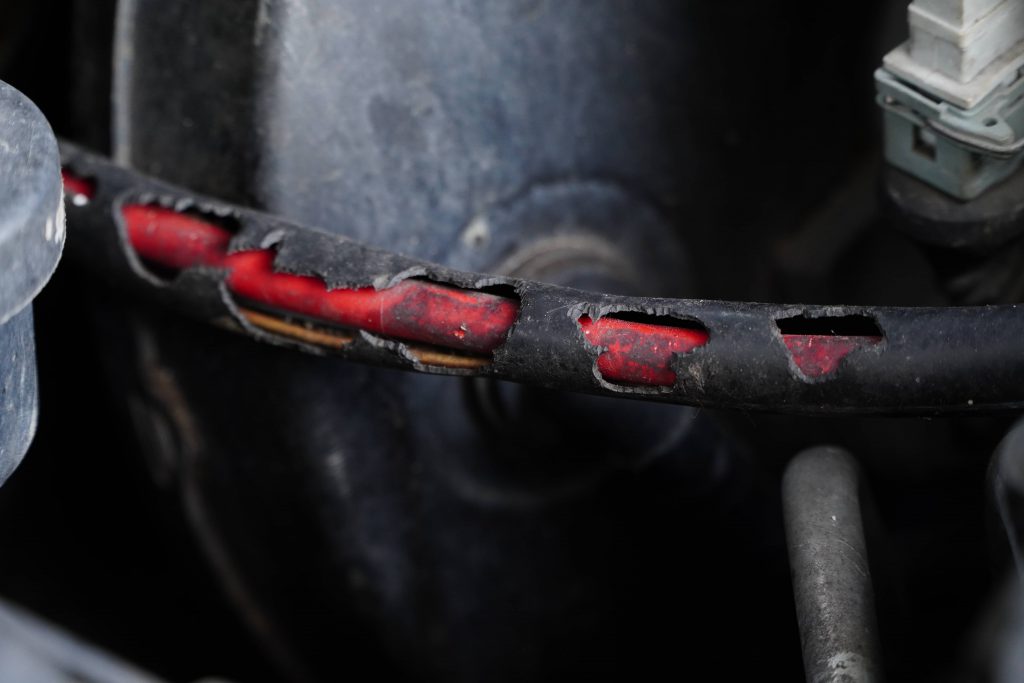
Some of the common signs that suggest your car is likely to catch fire include:
- Your car’s fuse blow repeatedly
- Oil or other fluid leaks under your car
- Broken or loose hoses
- Cracked or loose wiring
- Wiring with exposed metal
- Spilled oil under the hood after an oil change
- Your exhaust system emits loud sounds
- Your fuel and oil levels fluctuate
- Rapid changes in engine temperature
- If your oil filter is missing a cap
If you find yourself in this situation, or if you see these signs, you should immediately stop driving and contact your mechanic/workshop for advice.
The Importance of Regular Car Servicing
These issues found in your car components can be avoided if you send your car for servicing regularly.
During your regular servicing, these components will be checked and your mechanic will be able to identify if there are any fuel leaks and if there’s sufficient coolant liquid in the radiator to prevent overheating.
So, don’t underestimate the importance of your annual servicing session. Lower the chances of your car catching fire and ensure that you send your for routine maintenance and have your vehicle’s electrical, engine and fuel systems checked for any defects or issues. You should also do a visual check for any signs of oil leakage before moving off from the carpark!
Step by Step Guide: What to Do if Your Car is on Fire?
While dealing with a car fire might be something that many drivers don’t want to think about (or can’t imagine it happening to them), it is still a good idea to know what to do if your car shows signs of catching fire. or has already caught fire.
Follow these 4 steps to keep yourself (and your passengers) safe!
Step 1: Signal, Stop & Evacuate
When you see smoke or flames coming out of your car, you know that it’s serious business. You should immediately stop the car, turn off the engine, and get out of the vehicle.
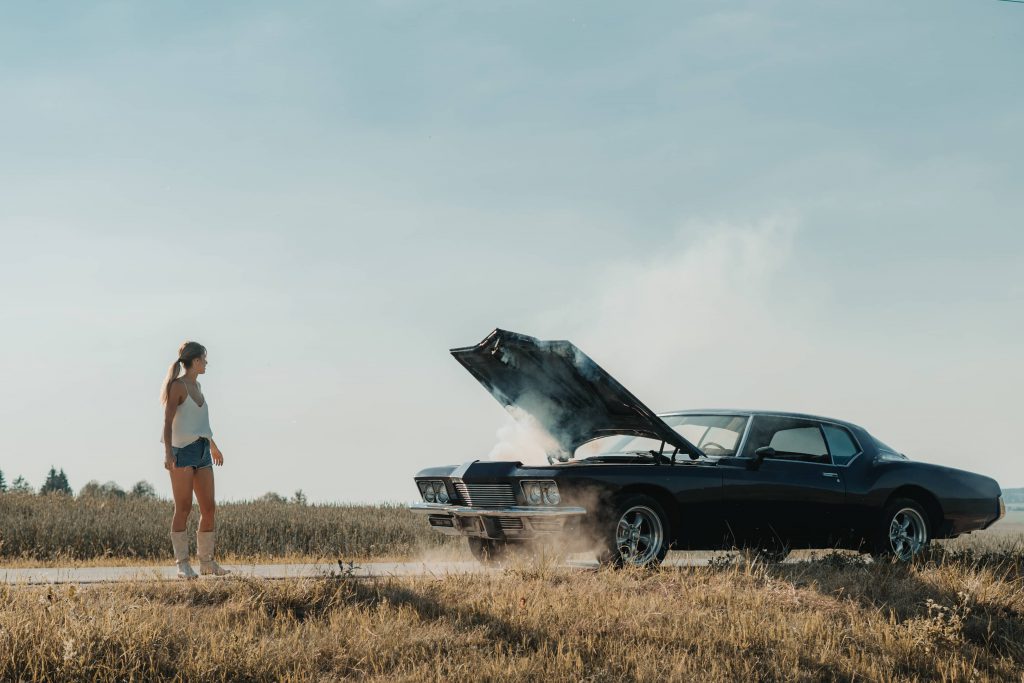
If you are on the highway, signal left and stop on the road shoulder. Otherwise, make sure you stop your car away from large crowds and if possible, away from other cars too. We’re sure you won’t want to endanger others or damage someone else’s property!
In the heat of the moment, some drivers might forget to turn off the engine and simply scurry out of the car once they’ve come to a stop. But make sure that you don’t miss this crucial step.
Turning off your engine will cut off the supply of fuel to the engine, which lowers the risk of the fire spreading or even causing an explosion!
Step 2: Safe Distancing, Please!
Keeping a safe distance from a car fire is super important in ensuring your safety, and the safety of your passengers. You’ll never know how the fire will escalate, or even cause an explosion.
So by staying a far away, you’ll be distancing yourself from inhaling toxic smoke and being harmed by the flames.
Don’t forget to keep busybody bystanders away too!
Step 3: Dial 995
Call the Singapore Civil Defence Force (SCDF) for help and patiently wait for their arrival.
Some people might tell you to fight the fire, especially if you have a fire extinguisher on hand. However, we think that you should leave it to the pros and don’t try to fight the fire.
We know it’s hard, seeing your beloved car go up in flames. But risking your life to save your property really isn’t worth it!
When Should You Try to Extinguish the Fire?
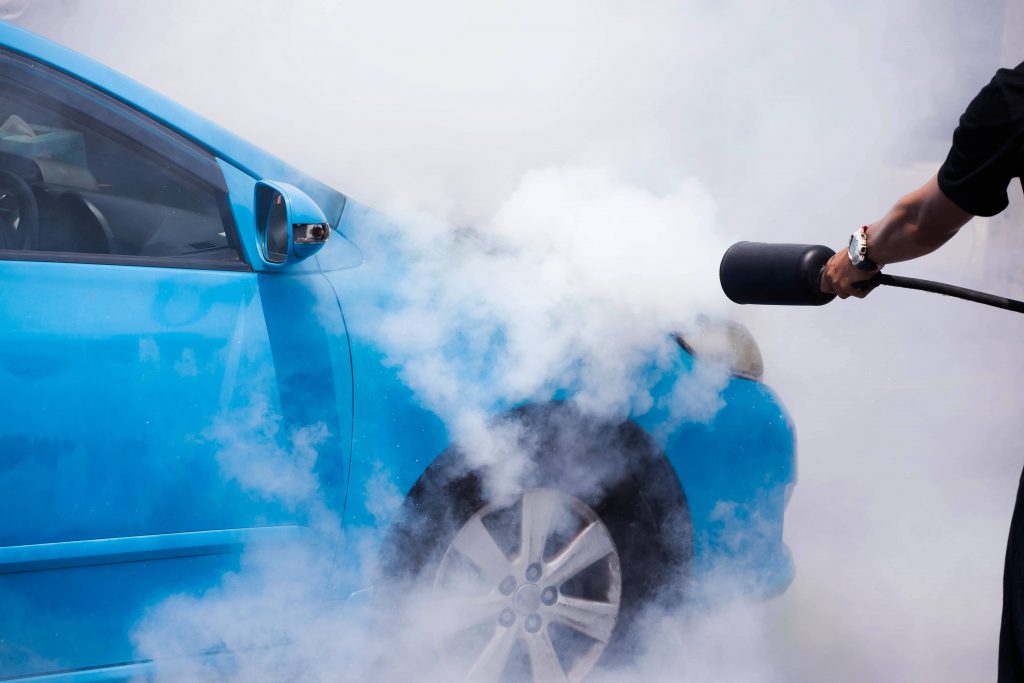
However, if you see that the fire is still small. Or maybe if there are only smoke and no visible flames yet. Then maybe, just MAYBE, you can consider using your fire extinguisher from a distance away to try and put it out.
If you’re going to try to extinguish it, remember not to open the hood of your car all the way up or open your car doors as these would increase the air supply and potentially accelerate the fire.
Additionally, if you see that the fire is coming from the rear, immediately stop what you’re doing and keep your distance. This is a clear indicator that your fuel tank is burning, and could potentially cause an explosion.
Step 4: Inform Your Insurer
Call your insurer and inform them of the situation. This is important as there are certain steps and documents you’ll need to prepare before submitting your claim.
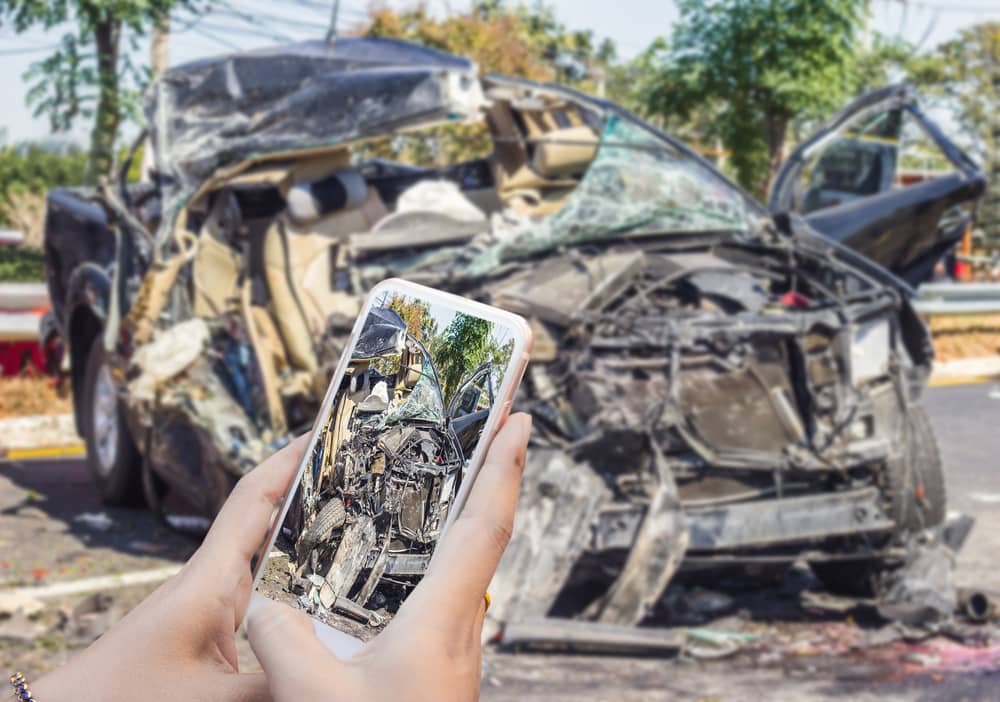
Some of the important documents to remember are:
- Police Report
- GIA Accident Report
- Insurer’s Surveyor Report
- SCDF Fire Investigation Report
Not Sure if Your Insurance Covers You?
As long as you have a Comprehensive or Third Party Fire and Theft insurance plan, you’ll be covered.
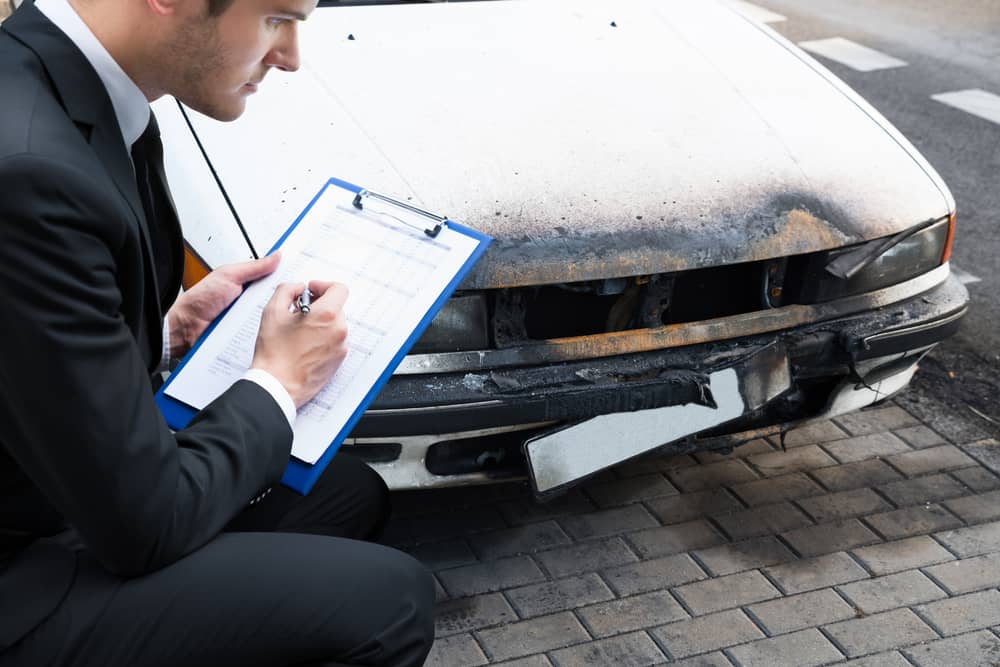
Calling your insurer during this situation is important as they can offer much-needed help and support to navigate through this scenario. For instance, if your insurer provides an emergency team, the team will guide you through the entire process after the accident like submitting claims and getting your car sent to the workshop.
Also, make sure you don’t admit to any liability if the fire was caused by a collision. This is because admitting liability might mean that your insurance won’t be covered for the damage done to your car!
BONUS: Things You MUST Not Do When Your Car is On FIRE!!
- Don’t try to retrieve your personal items while the car is on fire
- Don’t open the hood of your car all the way up
- Don’t try to douse the fire if you notice that it has spread to the rear
So the next time you’re out driving and smell or see smoke coming out of your car, don’t panic! Just follow this guide you’ll be prepared and know exactly what needs to be done to keep you and your passengers safe.

